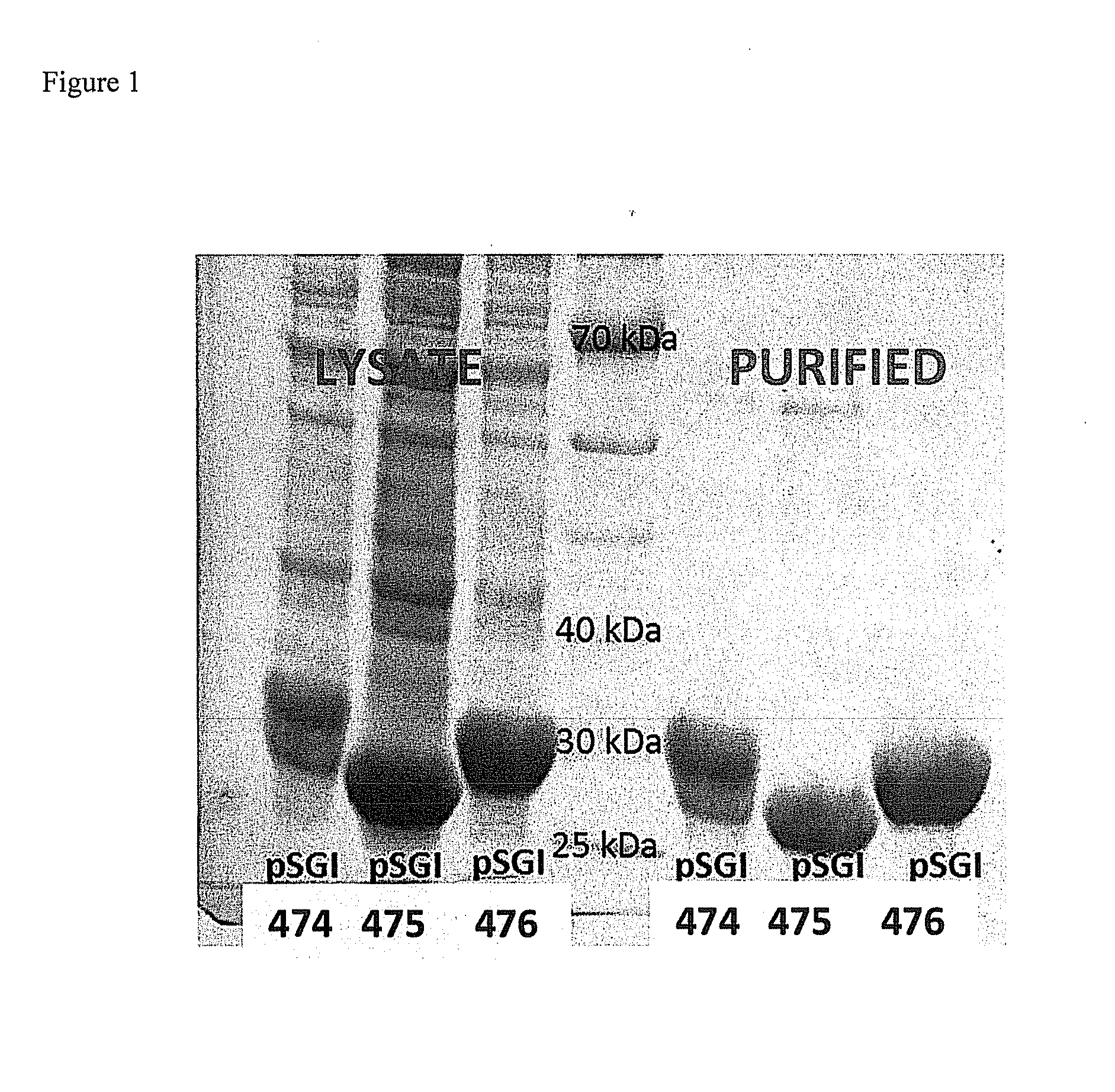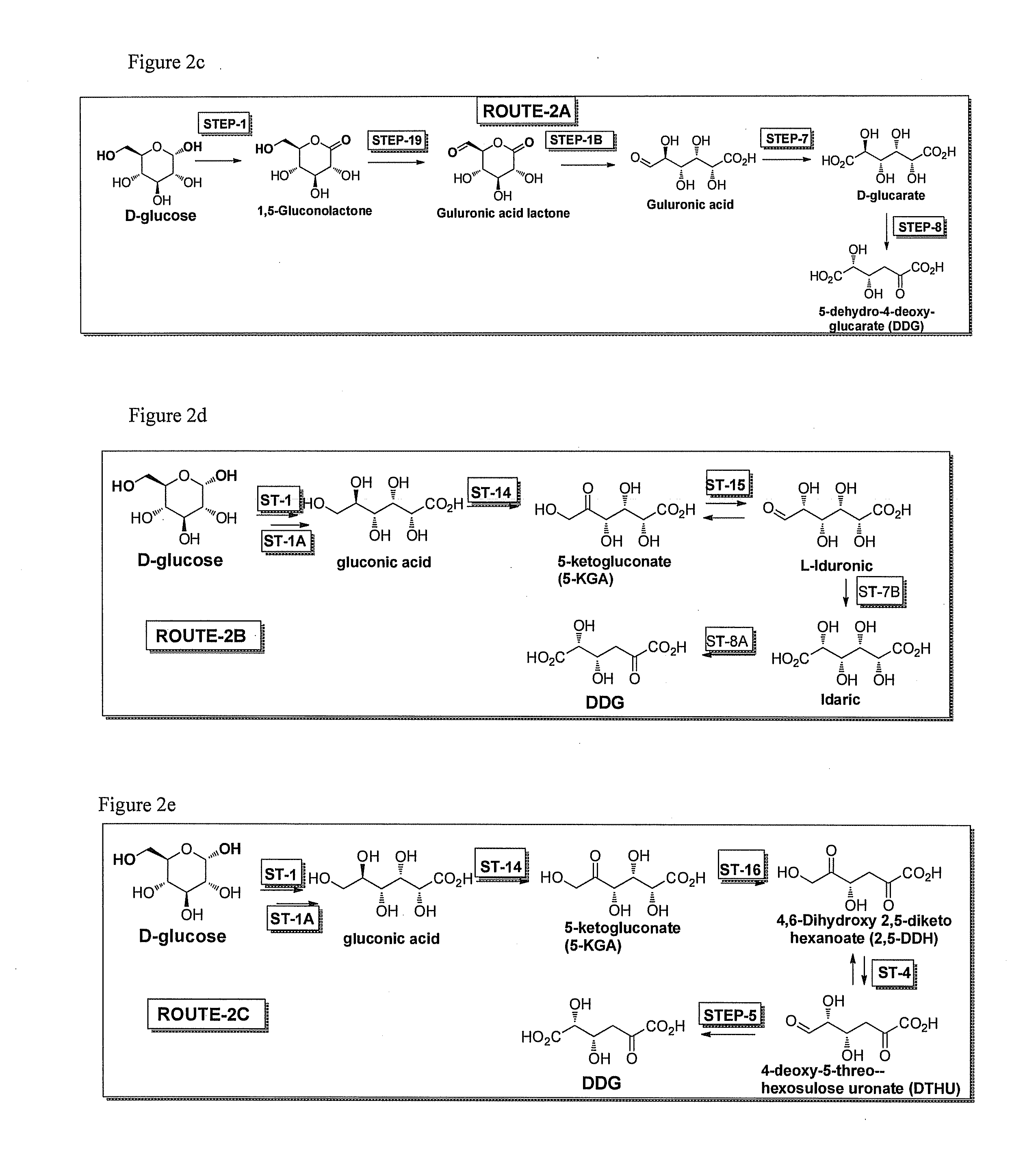Compositions and methods for producing chemicals and derivatives thereof
a technology of compositions and methods, applied in the direction of dna/rna fragmentation, organic chemistry, fermentation, etc., can solve the problem that the current fdca production process via dehydration is generally non-selective, and achieve high specificity and efficiency
- Summary
- Abstract
- Description
- Claims
- Application Information
AI Technical Summary
Benefits of technology
Problems solved by technology
Method used
Image
Examples
example synthesis routes
[0046]The invention also provides specific pathways for synthesizing and producing a desired product. Any of the following described routes or pathways can begin with glucose or fructose or sucrose or galactose or mannose and flow towards a desired product. In some embodiments D-glucose is the starting substrate and the direction of the pathway towards any intermediate or final product of the pathway is considered to be in the downstream direction, while the opposite direction towards glucose is considered the upstream direction. It will be realized that routes or pathways can flow in either the downstream or upstream direction. While glucose is used as an example starting substrate for pathways described herein, it is also understood that sucrose, fructose, galactose, or mannose or any intermediate in any of the pathways can also be the starting substrate in any method of the invention, and DDG, DTHU, FDCA, or any intermediate in any of the routes or pathways of the invention can b...
example 1
Step 2, Gluconic Acid to 3-dehydro-gluconic acid (DHG)
[0089]Enzymes with natural activity for the dehydration of gluconate are useful in the invention (EC 4.2.1.39). Three enzymes from this family were cloned as shown in Table 1. Enzyme pSGI-365 was cloned and shown to be a dehydratase with broad substrate range having strong activity for the dehydration of gluconate (Kim, S. Lee, S. B. Biotechnol. Bioprocess Eng. 2008, 13, 436).
TABLE 1Enzymes used in this experiment and identity homology.All expressed in P. fluorescenspSGIWT / ExpressionOrganism(Vector)Gene IDSYNHostAchromobacter365E3HJU7SynP. fluorescens(pRANGER)Achromobacter359#0385wtP. fluorescens(pRANGER)Acinetobacter360#0336wtP. fluorescens(pRANGER)359_Achromob365_E3HJU7pSGI-360_Acinetobacter (SGI)7879pSGI-359_Achromobacter (SGI)95pSGI-365 Acromobacter
[0090]Proteins 359, 360, and 365 (SEQ ID NOs 33-35, respectively) showed 2-5 mmole / min per mg of crude enzyme lysate activity for the synthesis of dehydration of gluconate (gel not...
example 2
Step 3—3-dehydro-gluconic acid (DHG) to (4S)-4,6-dihydroxy 2,5-diketo hexanoate (2,5-DDH)
[0092]Enzymes of the family (EC 1.1.1.127) can be used to perform this step. Two examples are 2-dehydro-3-deoxy-D-gluconate 5-dehydrogenase and DHG dehydrogenases. Five enzymes from this family were cloned as shown in Table 2 below. pRANGER™ vector was used in every case.
TABLE 2Cloned of DHG oxidoreductase(or 2-dehydro-3-deoxy-D-gluconate 5-dehydrogenase)pSGIGeneOrganism(Vector)IDWT / SYNExpression HostAgrobacterium374#9041WTP. fluorescenssp (SGI)Agrobacterium375#8939WTP. fluorescenstumefaciens (SGI)E. coli376P37769WTP. fluorescensSphingomonas (SGI)395#5112WTP. fluorescensHoeflea phototrophica396#7103WTP. fluorescens(SGI)
[0093]The product prepared from the dehydration of gluconate in Step 2 was used as substrate for assaying the lysates of Table 2. As shown in the following Table 3, enzymes were identified showing activity for the oxidation of DHG in assays measuring NADH formation (absorbance inc...
PUM
 Login to View More
Login to View More Abstract
Description
Claims
Application Information
 Login to View More
Login to View More - R&D
- Intellectual Property
- Life Sciences
- Materials
- Tech Scout
- Unparalleled Data Quality
- Higher Quality Content
- 60% Fewer Hallucinations
Browse by: Latest US Patents, China's latest patents, Technical Efficacy Thesaurus, Application Domain, Technology Topic, Popular Technical Reports.
© 2025 PatSnap. All rights reserved.Legal|Privacy policy|Modern Slavery Act Transparency Statement|Sitemap|About US| Contact US: help@patsnap.com



